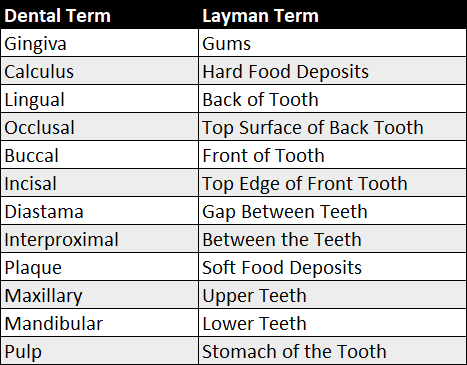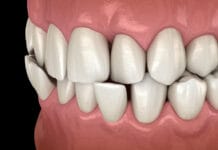Communication is the process by which information is exchanged between individuals through a common system of articulation. This article will focus on replacing dental terms and conditions using layman terms to ensure patient understanding and, thus, better communication. Providing a clearer picture of the diagnosis, treatment or recommendations will allow clinicians to bridge the gap between themselves and their patients.
During dental appointments, we, as clinicians, are expected to communicate with our patients, regardless of their age, gender, or socioeconomic status, so the patients understand the information provided. Speaking to the patients and converting the accurate or scientific dental terms to a more common form enable the patients to make informed decisions on treatment and/or raise their confidence in understanding the recommendations or information given. However, showcasing our dental knowledge, when communicating, can interfere with the connection needed between the patients and clinicians.
I recall when I attended dental hygiene school it was often reiterated how important the role of communication was between the patients and dental hygiene students. The one exercise that I have used throughout my career, and the one that has had the most impact on me, was a practice homework assignment that listed dental terms that I was to restate in simpler language so the patients would understand.
I have composed a list of some dental terms and their conversions as an example of how clinicians can better communicate with their patients so that understanding and clarity is accomplished.

These dental terms are used in everyday dentistry and should be explained to our patients, but we also need to be able to communicate diagnosis and recommendations in a simplified manner. An example of a diagnosis that would need to be simplified is “caries,” which describes tooth decay caused by the presence of Streptococcus mutans and Lactobacillus. As clinicians, we understand this progression but how do we convey that understanding to patients? Instead of using Latin terms, we simply explain that caries progression occurs when the bugs in our mouth survive by eating the sugar we eat, then “poop” on our teeth causing them to become sick.
Another example would be periodontal disease, which is a bacterial infection causing the loss of the periodontium. Clearly, this process would not be understood by someone lacking dental knowledge. A more simplified explanation is the loss of supporting bone and supporting tooth structures, such as gums and ligaments, caused by the presence of bad bacteria.
Simplified dental terms are used specifically in children’s dentistry, but should not be limited due to age. Clinicians use layman terms to describe the instruments they are using during a child’s prophylactic to ensure ease and understanding. Some common examples of dental terms in children’s dentistry that need simplifying are fluoride, also known as tooth vitamins, the suction, a.k.a. Mr. Thirsty, and the slow-speed handpiece, referred to as Mr. Tickles.
Compiling a list of dental terms used on a daily basis is a fun and rewarding activity that will allow us to communicate with our patients more effectively. Not only will your patients be appreciative that they are leaving their appointment with a clearer understanding of their treatments, but it is also effective in producing a positive response from the patients to pursue follow-up treatments and visits.
Communicating and understanding go hand-in-hand in the dental office and is not just limited to the clinicians, but all dental personnel. Simplified terms are better for patient education, diagnosis, and treatments. Bridging the gap of communication will result in more productive and positive appointments for the clinicians and the patients.
SEE ALSO: How Small Gestures Can Help Apprehensive Patients
DON’T MISS: Treating Bilingual Patients in a Dental Setting












